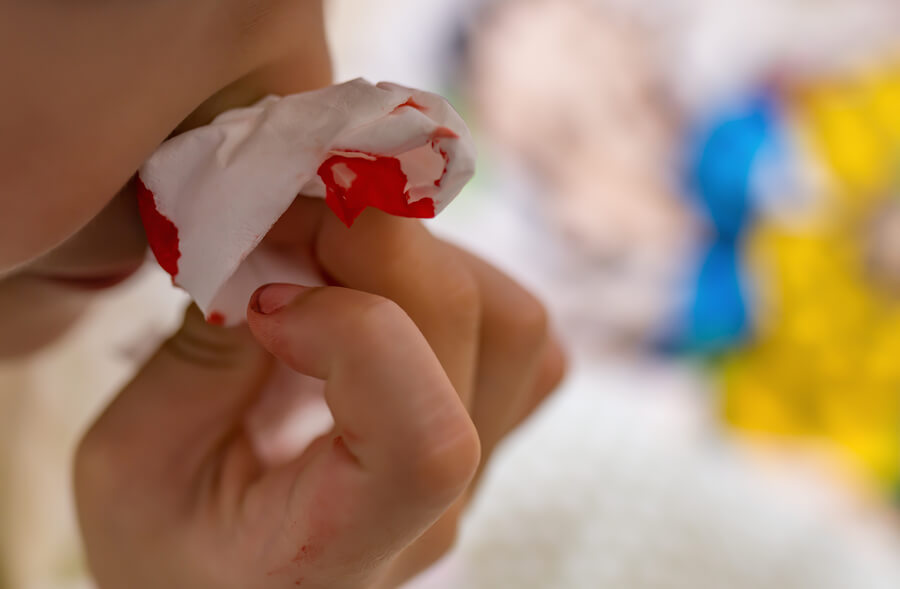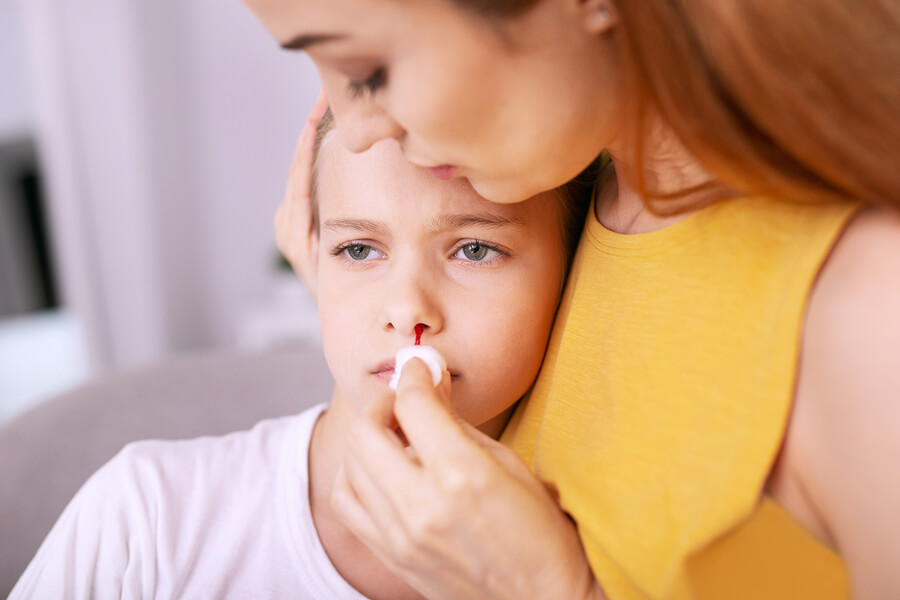How to Treat and Prevent Nosebleeds in Children

Also known as epistaxis, nosebleeds in children are very common. They mainly occur in children between ages 2 and 10.
Seeing a nosebleed can definitely worry parents, but it rarely ever becomes a serious condition. In general, it doesn’t need medical care and can be treated at home.
Types of Nosebleeds in Children
Internal nosebleeds are the most common. They occur in the front of the nose and when the small blood vessels in the nose break. Then, the nose starts to bleed.
Another type is the external nosebleed. As the name states, it occurs at the back of the nose, which is the deepest part. In this type, blood goes down the back of the throat. In reality, these nosebleeds aren’t common in children.

Causes of Nosebleeds in Children
There are many different causes for nosebleeds in children. The most common one is dry air. Both dry climate and high heat can irritate and dry out mucous in the nose. This creates scabs, which become itchy, and that makes children scratch their nose. Then, the nose bleeds.
Colds are also common causes of nosebleeds in children. They produce irritation in their nasal mucous, which causes their nose to bleed.
Generally, this happens when children blow their nose repeatedly throughout the day. Allergies could also possibly cause nosebleeds.
Finally, injuries, bumps, or falls could also cause a child’s nose to bleed. The same thing occurs that we mentioned earlier. Blood vessels pop in their nose from the hit and it starts to bleed.
How to Treat Nosebleeds in Children
When children’s noses bleed, adults usually panic and worry. When you have to take care of children, it’s very important to keep calm. It’ll help you to remember that it’s nothing serious.
To help stop the bleeding, you should pinch their nose with your thumb and index finger. They should hold their head normally or bent slightly forward. It’s important to keep their head in this position for a little while to stop the bleeding.
A very common error is to tip the child’s head back. This doesn’t make much sense because then the child could choke on the blood. It could also make them cough or vomit.
Once the bleeding stops, you should wait a little while. While you wait, make sure the child doesn’t touch his nose, stick his finger inside it, or blow it. For the next few days, you should be careful that he doesn’t hurt it again. His nose will be weaker and it will be easy for it to start bleeding again.

How to Prevent Nosebleeds in Children
Preventing nosebleeds is relatively easy. Most are caused by the environment or injuries. It’s important to follow a few tips to prevent nosebleeds:
- One way to prevent nosebleeds is by keeping your children’s nails short. This way, you can prevent them from hurting themselves if they pick their nose. Additionally, it’s important to teach your children to not put fingers or objects up their nose.
- When the climate isn’t ideal, it’s a good idea to keep the air humid. You can use a vaporizer or humidifier. Either way, it’s important to keep the equipment clean to not spread dirt or dust in the air.
Another way to prevent nosebleeds in children is by keeping their nasal mucous moist. To do this, you can use saline nebulizers or certain creams. Any of these options helps prevent their nose from drying out and getting hurt.
Finally, if children play contact sports where they could get hurt, we recommend using safety gear so that they don’t injure themselves. Remember that, although you may take the necessary precautions, they could still get nosebleeds.
This text is provided for informational purposes only and does not replace consultation with a professional. If in doubt, consult your specialist.








